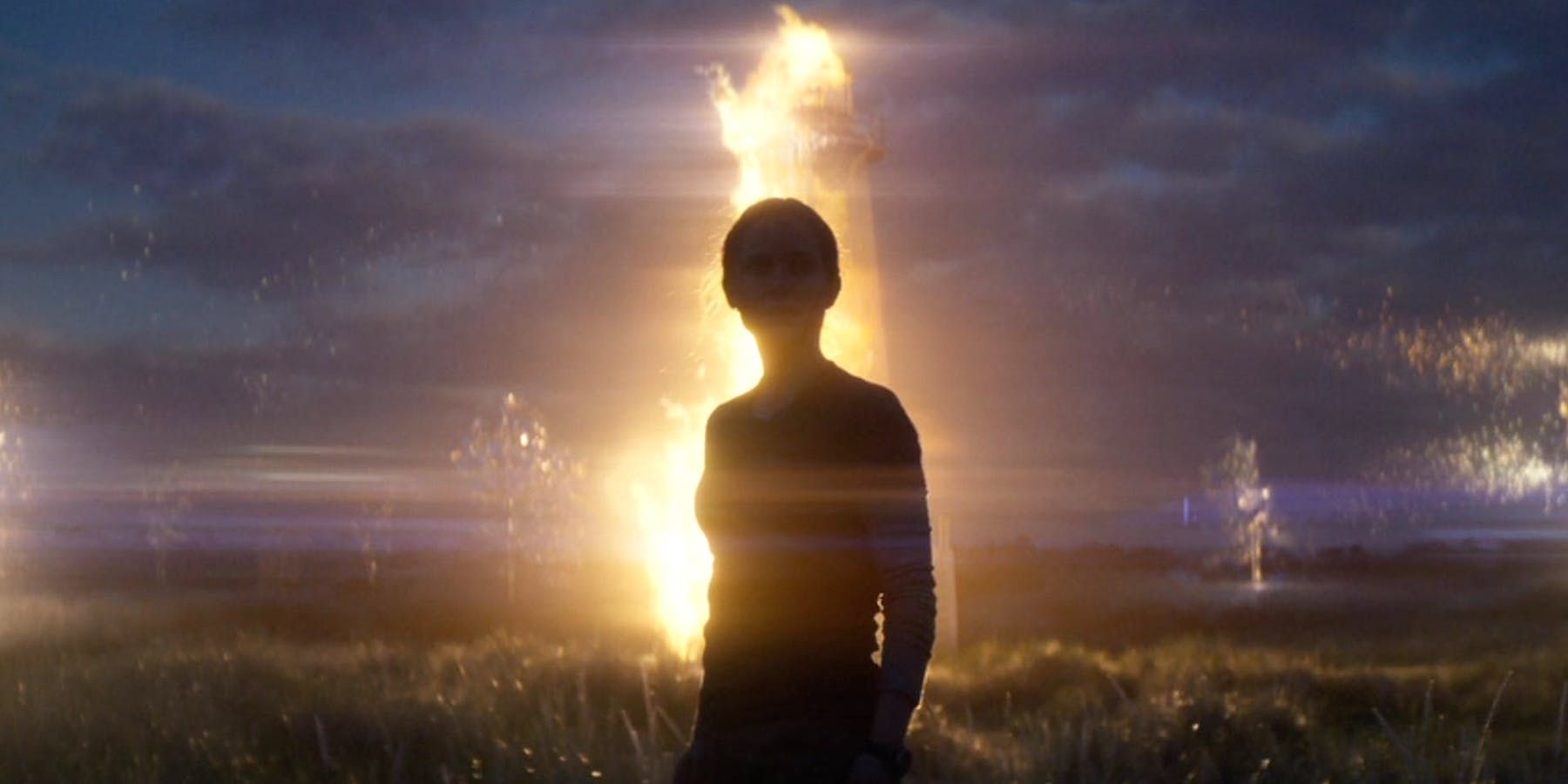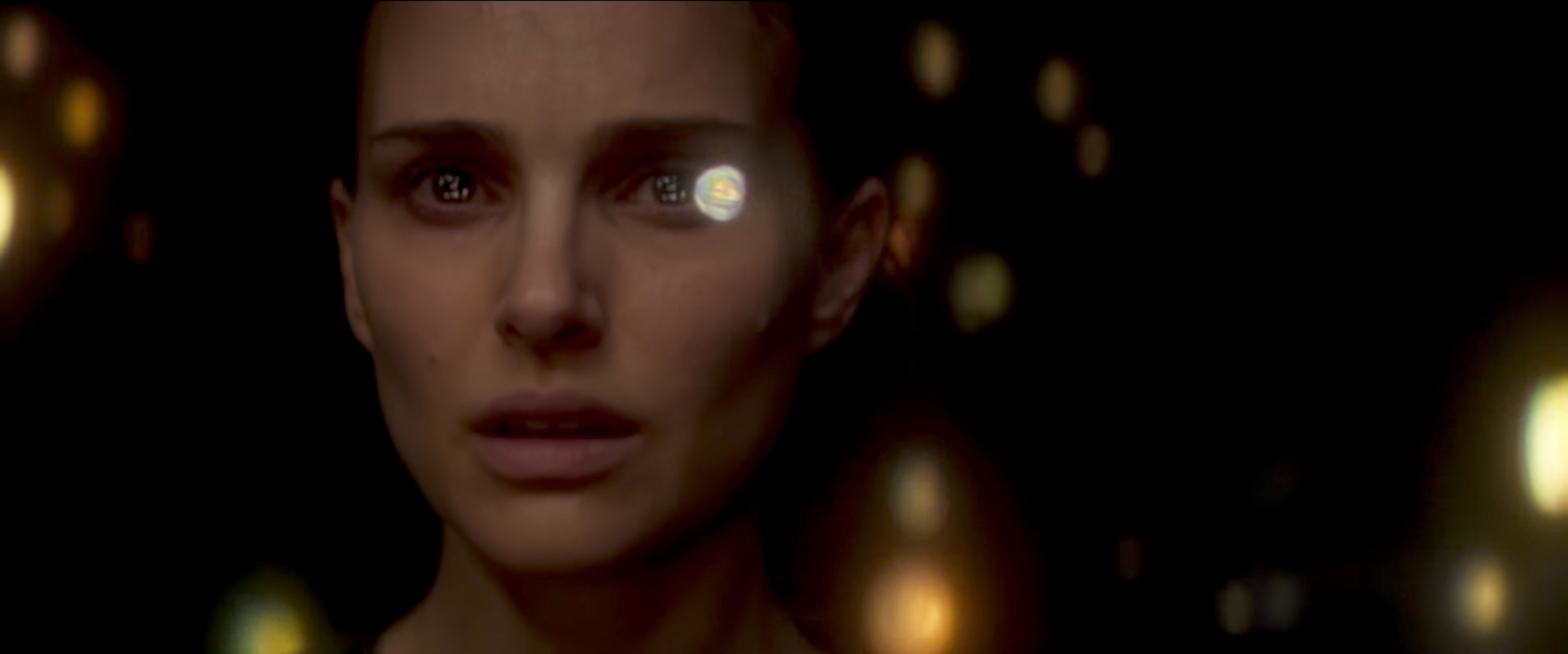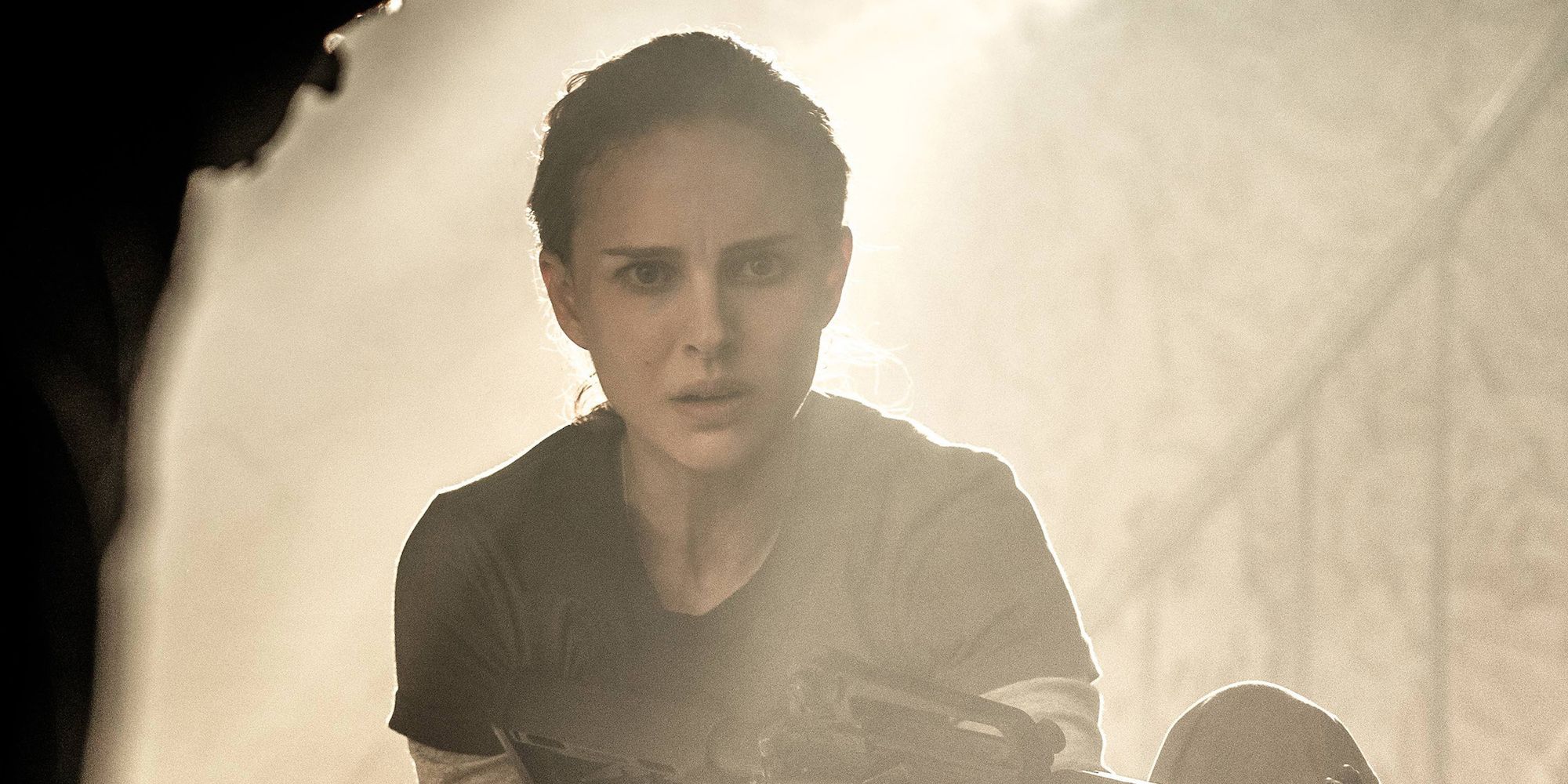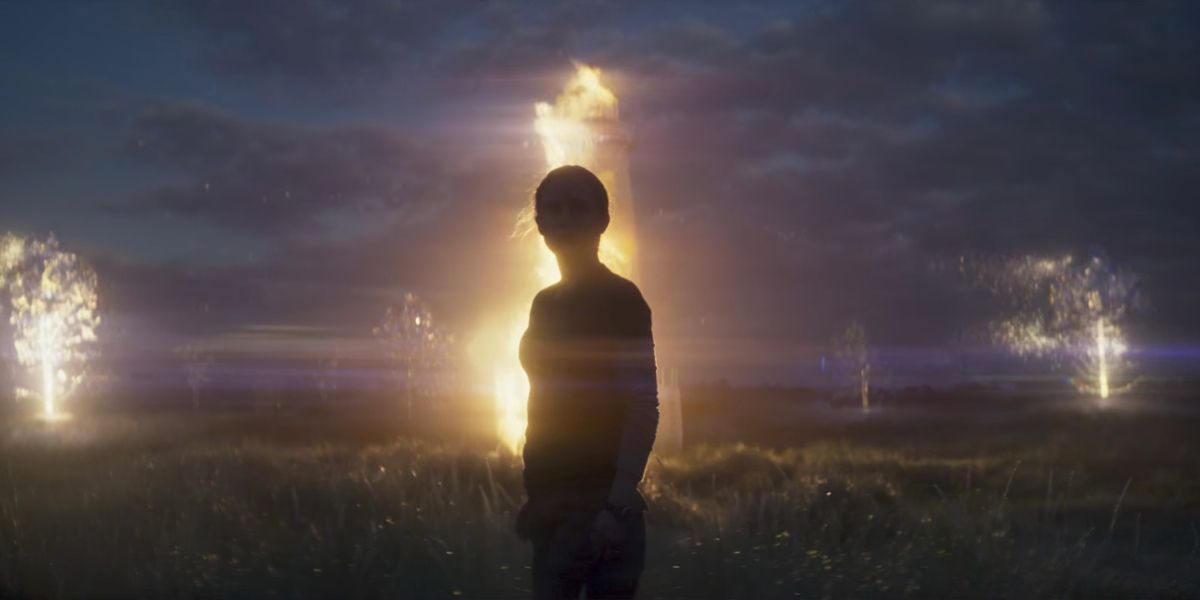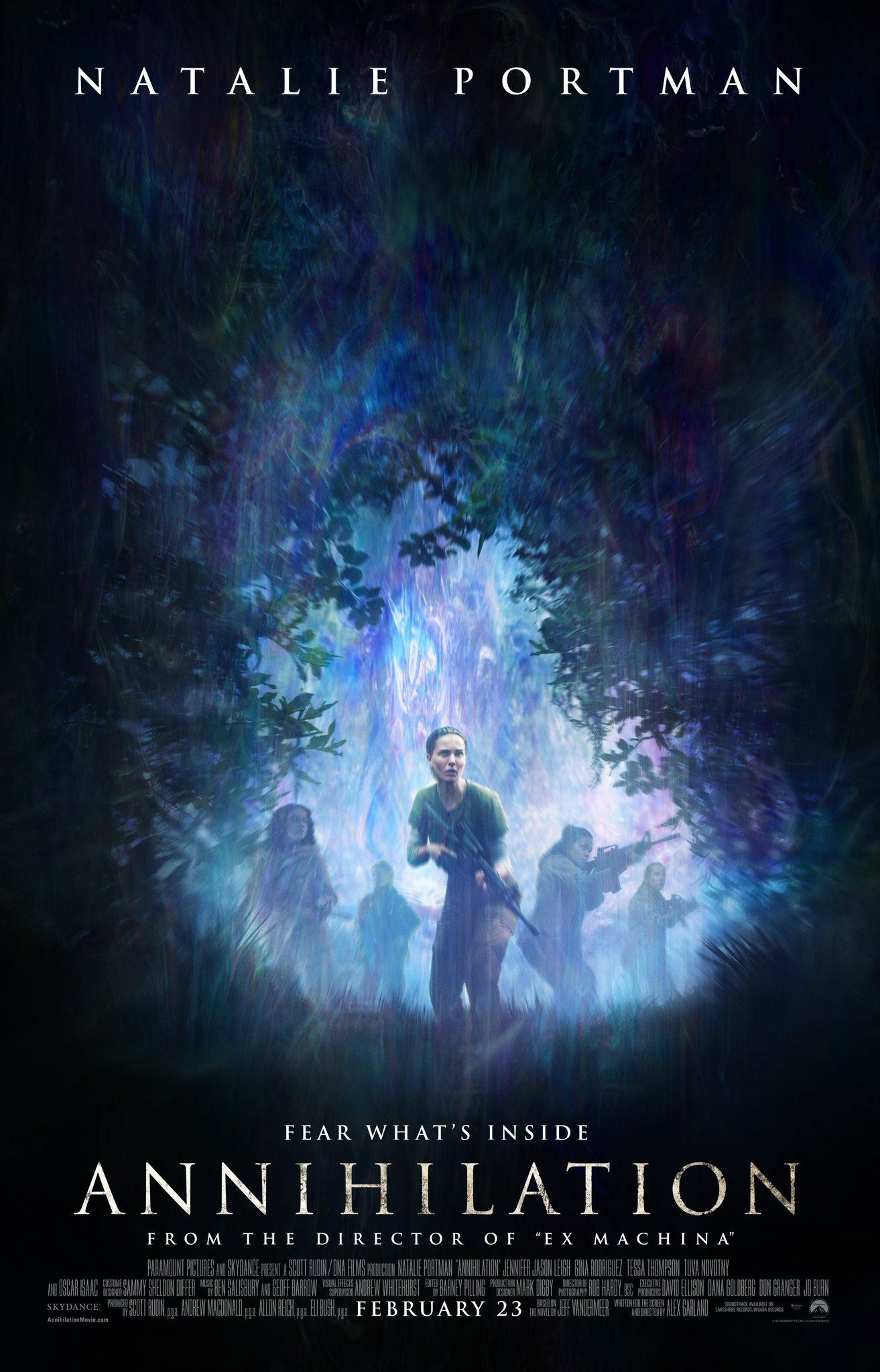Annihilation, based on the first novel of the same name in the Southern Reach Trilogy by Jeff VanderMeer, is writer and director Alex Garland's follow up to 2014's film Ex Machina. While the film follows the same basic premise of the sci-fi novel, there is a huge difference between the original source material and what ended up on the big screen.
The story of Annihilation revolves around a group of female scientists sent into a location known only as Area X (the film calls it The Shimmer). Their mission is to uncover the mysterious things happening inside the region and how to stop it from expanding and threatening the rest of the country. The book follows the main character, played in the film by Natalie Portman, who embarks on the mission to uncover what has happened to her husband (Oscar Isaac), who was part of a previous expedition. Along the way she and the other scientists find a number of unusual things that cause them to question their very understanding of reality.
Related: How Scary is Annihilation?
Annihilation is a movie based on a book, but it is not an adaptation. Instead, Garland takes the feelings of anxiety and horror created by VanderMeer's writing and uses them to dictate the tone and visual style of the film. Both versions are thought provoking experiences that will leave their respective audiences with open jaws and tons of questions.
Here are the major things that were changed.
The Characters Don't Try to Get Along in the Book
In the book version of Annihilation the characters are described only by their professions. There is the Biologist (Portman), the Psychologist (played in the film by Jennifer Jason Leigh), the Anthropologist, and the Surveyor. There is also a Linguist who is supposed to join the group, but changes her mind at the last minute. The characters are given no physical descriptions and the only background information given is what the biologist reveals about herself. Garland explained this as the reasoning behind choosing to cast Portman and Leigh, white actresses, in a roles that in the books are described as Asian and half-white, half-Native American respectively. This character information is not provided until the second novel, Authority, which Garland did not read or use as source material for his film.
In the novel, the relationships between the female scientists are much more antagonistic. While the film shows them in lighter moments trying to build camaraderie and opening up to each other, the book shows hostility from the very beginning. None of the characters trust each other. They do not know the motivations for why the others would want to venture inside Area X, which in the book is veiled in secrecy and mystery. It is a tense building of animosity that eventually grows to such an extent that the Biologist kills the Surveyor. In the book it is every character for themselves, rather than the group dynamic that persists at least initially in the film.
Another major character difference is the personality of the Biologist. In the book, she is much more clinical and introverted. She prefers tide pools to people and has a tense relationship with her husband who she has trouble letting in. The Biologist is driven by her overwhelming curiosity. She volunteers for the mission into Area X after her husband returns because she wants to know what happened to him from a scientific perspective. In the book her husband and the rest of the members of his team die from cancer shortly after returning home from Area X. In the film, Portman's character is driven by her guilt and feeling that she œowes her husband because she had an affair while he was gone. Her actions are driven more by him and their relationship than her own desires.
The Movie Cuts A Major Book Plot Point
One of the central plotlines - and mysteries - of Annihilation is left out of the film. In the book, upon exploring Area X, the Biologist discovers a tunnel which she calls a tower. The Biologist is drawn to this place and returns to it to discover its true purpose. The tower goes deep into the earth and on its walls are written words made from a plant like substance that appear to be alive. When the biologist gets too close to the plants they shoot out spores which infect her and in turn give her heightened senses. This is what causes her body to change and adapt to the environment, unlike in the film where all of the characters are affected inside the contaminated area.
This tower and the creature inside the tower, the one writing the words on the walls, are absent from the film. Instead in the film, the explorers are motivated by their desire to get to the lighthouse and uncover the source of the Shimmer. They are also driven by their flight from strange hybrid animals, like bears and crocodiles, that pick off the members of the group one by one. The film is more of a monster movie about survival, while the book is quieter, with more time for introspection and wonder.
However, despite Annihilation's quick pace, it does a good job of creating the same sense of dread as the novel with its sound and score. The strange animals may not have appeared in the book, but they add to the overall sense of horror that permeates the film. The bear that attacks Anya (Gina Rodriguez) makes for an especially tense scene as it stalks its prey with the voice of its former victim, Cass (Tuva Novotny).
The Meaning of Annihilation
What exactly is œannihilation? The book and the movie give very different answers. In the book, the Psychologist has the ability to hypnotize people, a power which she uses to submit the other members of the team to her will. She uses certain phrases to cause the other members of the team to fall into a hypnotic state. The word "annihilation" in particular is to be used to cause another member of the team to commit suicide. The Biologist learns of this ability and is deeply unsettled. She questions the motives of the Psychologist and how much the other woman knows about Area X that she has not revealed to the rest of the group.
In the film, annihilation is described by Dr. Ventress (Leigh). "Our bodies, our minds will be fragmented into the smallest parts. Annihilation," she says. Those who enter the Shimmer experience a feeling of disintegration in both body and mind that eventually causes them to devolve into madness. Each character has a different response to this change. Ventress tries to fight it, explaining that she wants the person who started the mission to be the same one who ends it as she feels herself slipping away. Josie (Thompson) chooses to embrace it and becomes part of the world inside the Shimmer. Lena (Portman) tries to understand it and gets much more than she bargained for.
Annihilation is something that cannot be controlled. It is something that happens to you, either caused by another person or by entering into The Shimmer. In the film the characters all have their own reason for choosing annihilation and how to address the moment it finally comes for them.
The Book and Movie Have Very Different Endings
The book and film versions of Annihilation answer the question of leaving Area X (or the Shimmer) very differently. At the end of the movie, Lena returns to Southern Reach to tell her story to the scientists there, although the state in which she returns is up for interpretation. The final shot of Portman's eye reveals that maybe the biologist wasn't so successful in defeating the Shimmer after all. The film's ending feels foreboding, leaving plenty of room for theories about what might happen next. It's a question that will likely never be answered, since Garland has "zero plans" for a sequel.
The book's ending is slightly more hopeful. After finding a note from her husband detailing his plans to travel further into the region, the Biologist decides to stay inside and follow him. The Biologist knows that the version of her husband who returned home is not who he really was and decides to look for him with a newfound purpose and sense of discovery. And because there are two more books in the trilogy (Authority and Acceptance) there is that tantalizing promise that this is not the end and that more will be revealed.
Alex Garland Didn't Adapt Annihilation In the Usual Way
The film version of Annihilation is not a direct page-to-screen adaptation. Garland took the major themes and some of the plot points from the book and used them as a starting point to shape the tone of the film. Both versions tell a cerebral story with heart pounding action and science fiction thrills, just in different ways. The book is content to pose questions, but not necessarily answer them. Because the book is told from the perspective of the Biologist's field journal, the reader only knows as much as she does. The story is full of her emotions and scientific musings about the strange things happening inside Area X without the ability to draw any real conclusions or even the right language to explain what she is experiencing.
The film poses many of the same questions as the novel, but it also seems to want to give some explanations. It reveals the cause of the Shimmer to be connected to the lighthouse and the Event that started it all to be a meteor crashing into the structure. It feels comfortable calling the lifeforms inside the area alien. The film adds an element of danger with the hybrid animals that hunt and kill most of the scientists. It is much more action oriented than than the more introspective and science oriented book.
Both versions of Annihilation work well as companion pieces. One can be enjoyed without the other, but together they make for a far more heightened experience. Garland's incredible visuals, score, and sound design come together to immerse the viewer in a way that is different from reading VanderMeer's chilling descriptions alone. Garland's film manages to capture the spirit of the novel while making something uniquely his own.
Next: Annihilation Ending & Shimmer Explained

